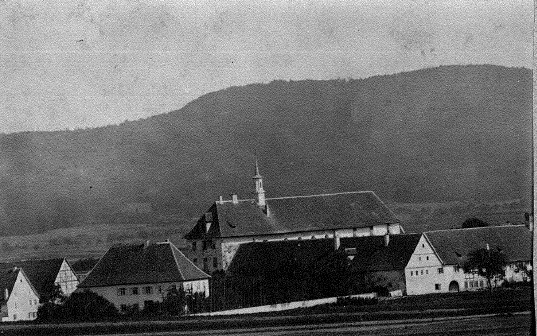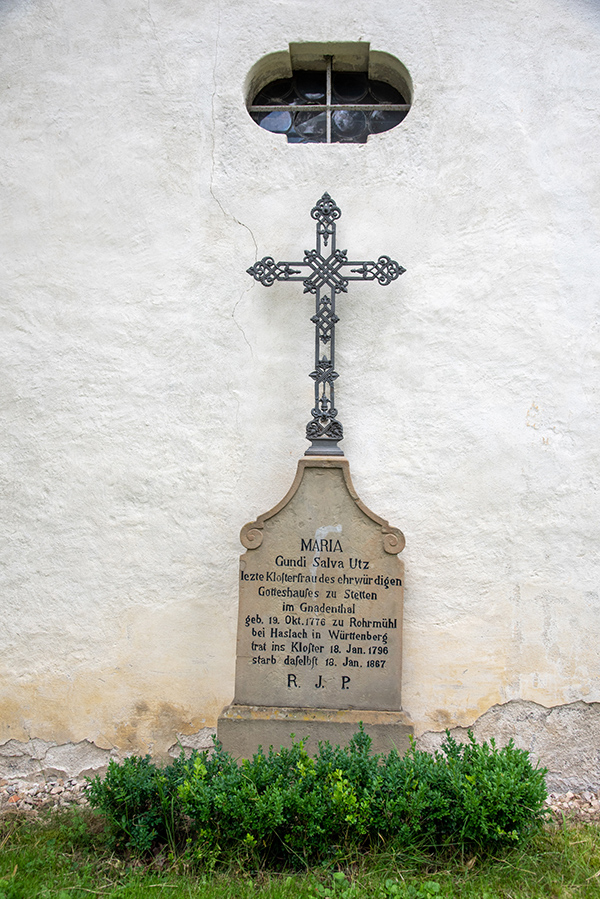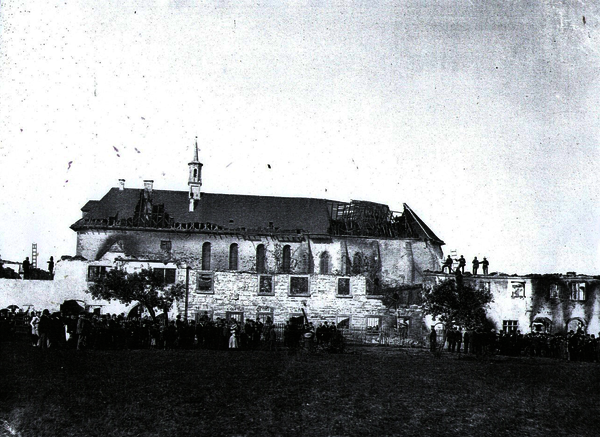After its foundation, the cloister was inhabited by Augustinian nuns. It was first mentioned in a document of 1261, in which Pope Alexander IV attested their privileges. From 1278 it was put under the control of the Dominican nuns and remained a convent until its closing in the course of secularization in 1802/04. Prince Herman Friedrich Otto von Hohenzollern-Hechingen became the new owner.
The nuns were allowed to stay in the convent until the end of their lives. The last nun at the cloister of Stetten was Gundisalva Utz, who died at the age of 91 on 18.1.1867. Her gravestone was moved to the north-east side of the building in the 20th century. The inscription refers to the venerable church as "Stetten im Gnadenthal", as it is also called.




